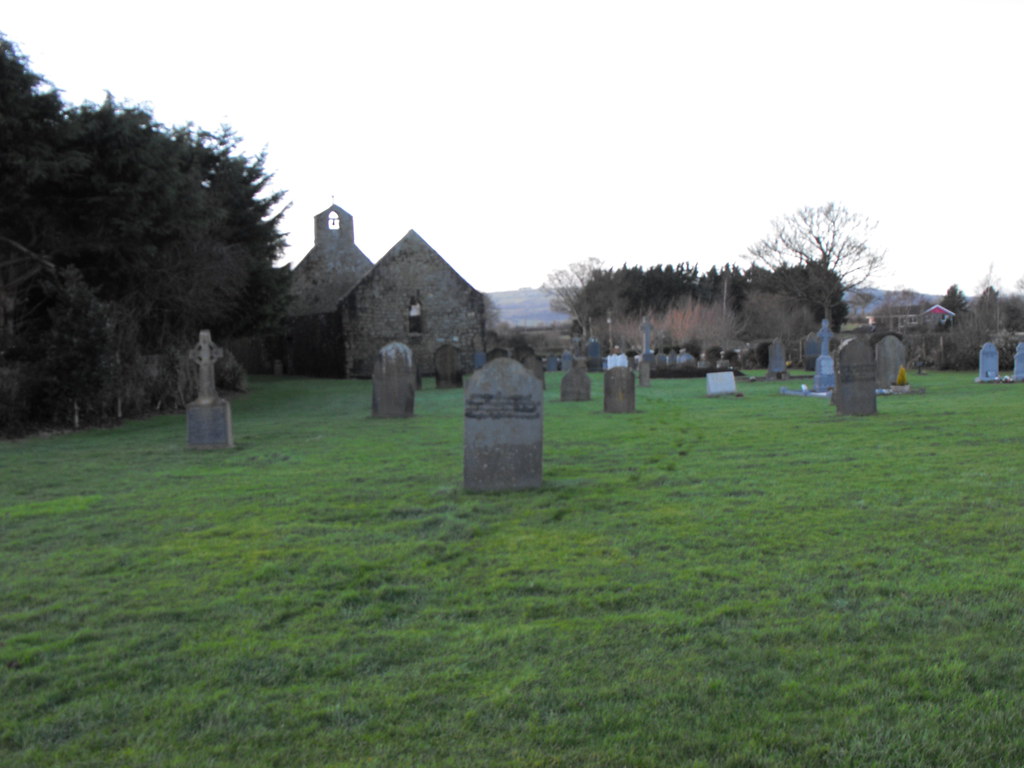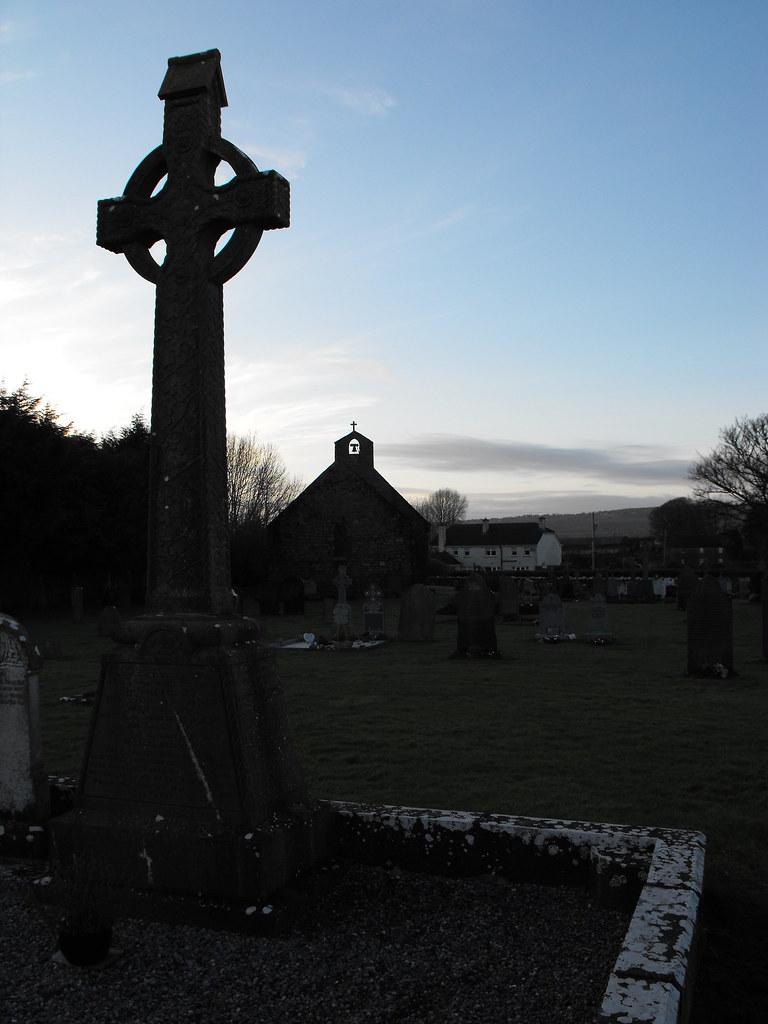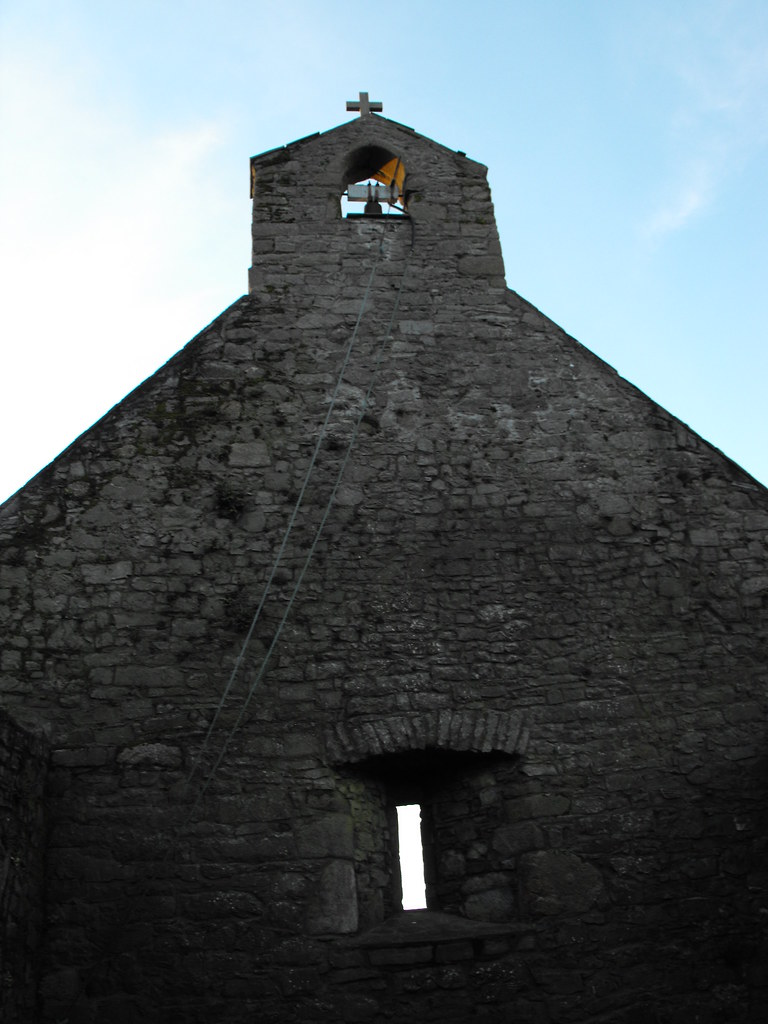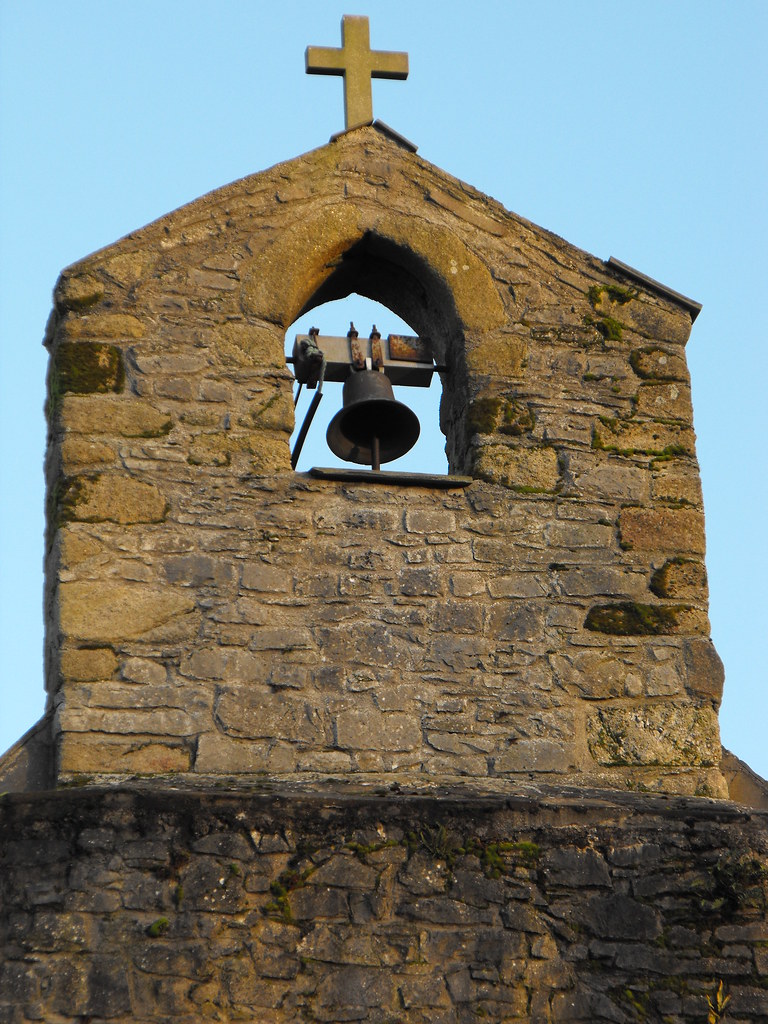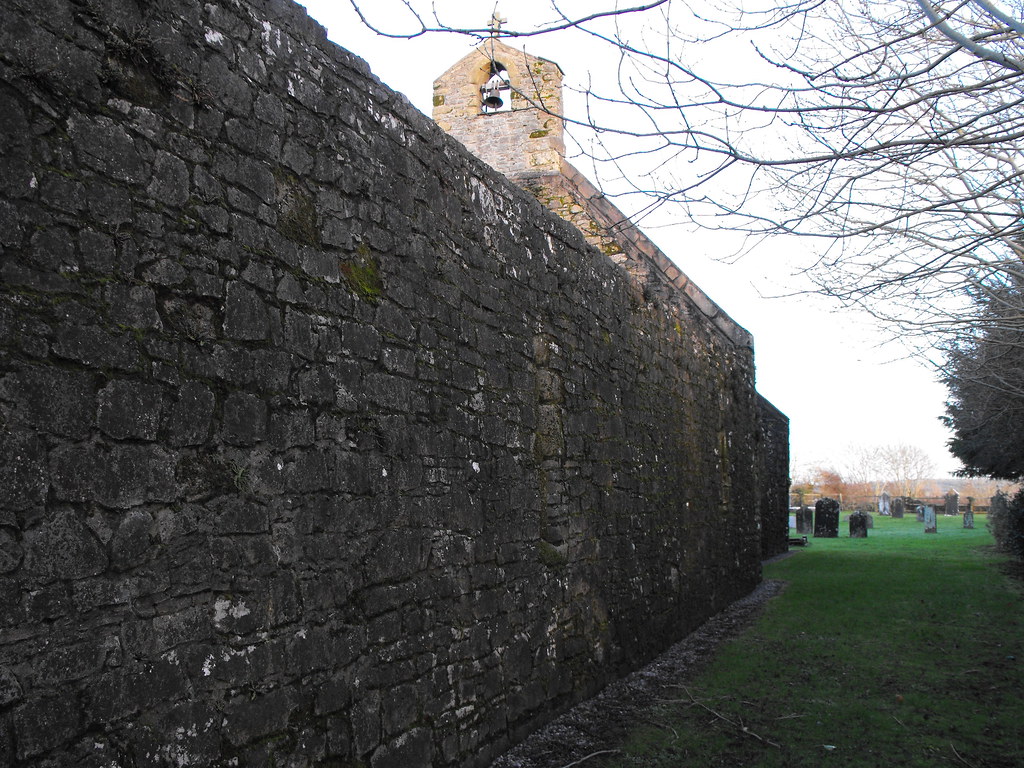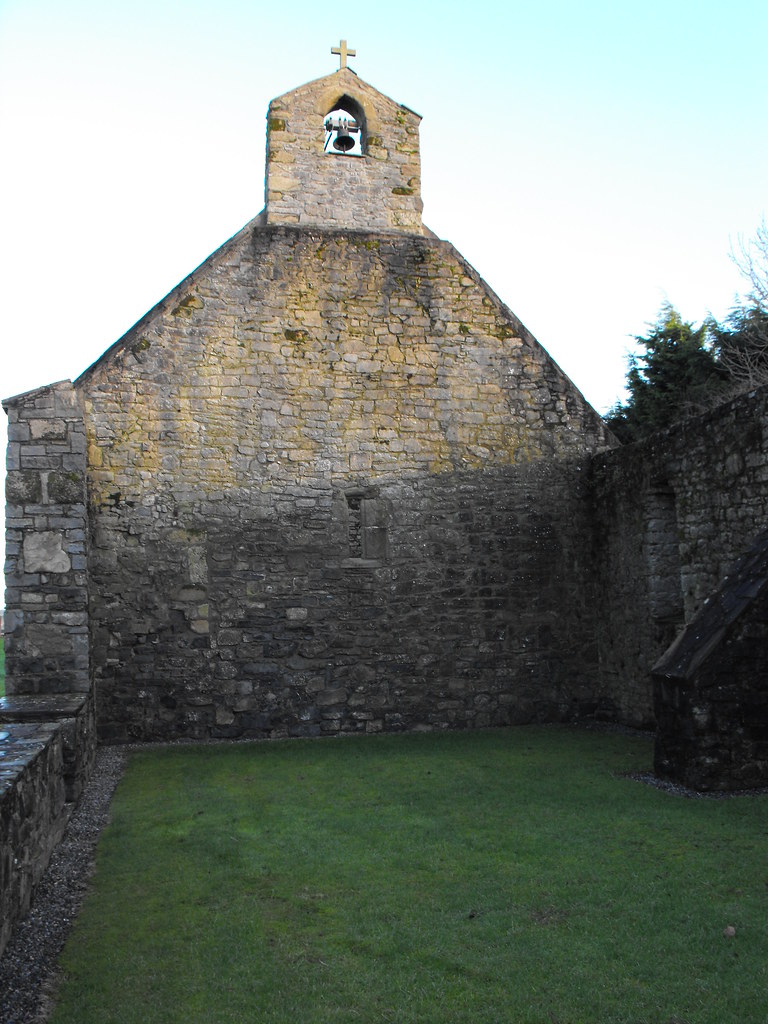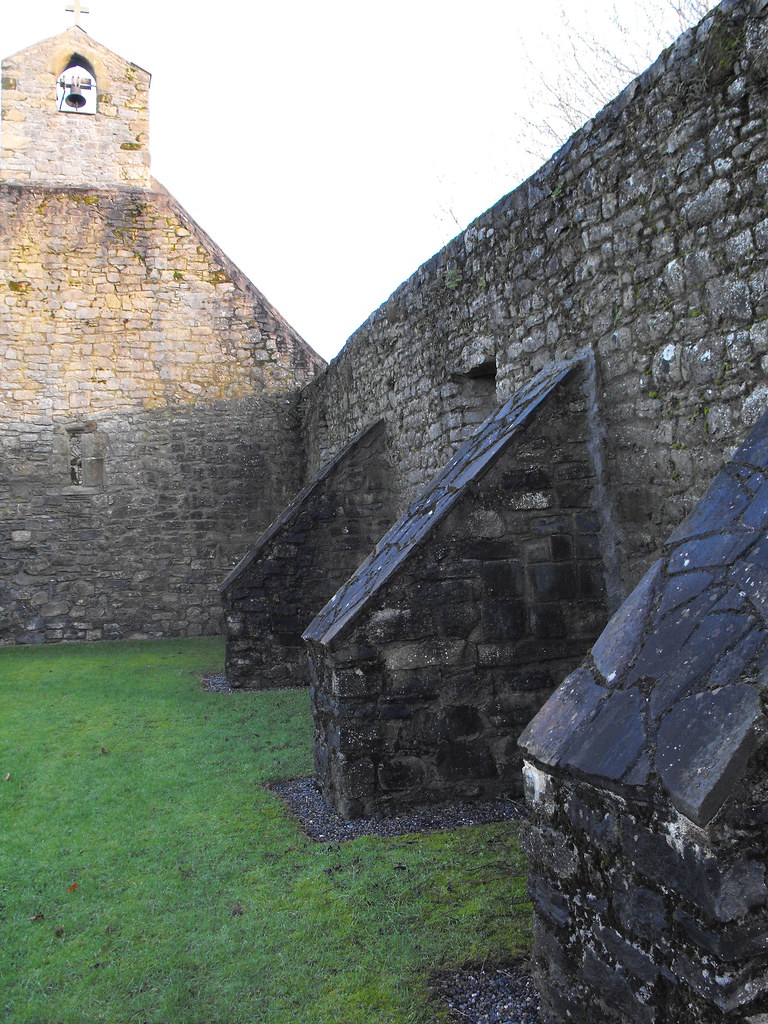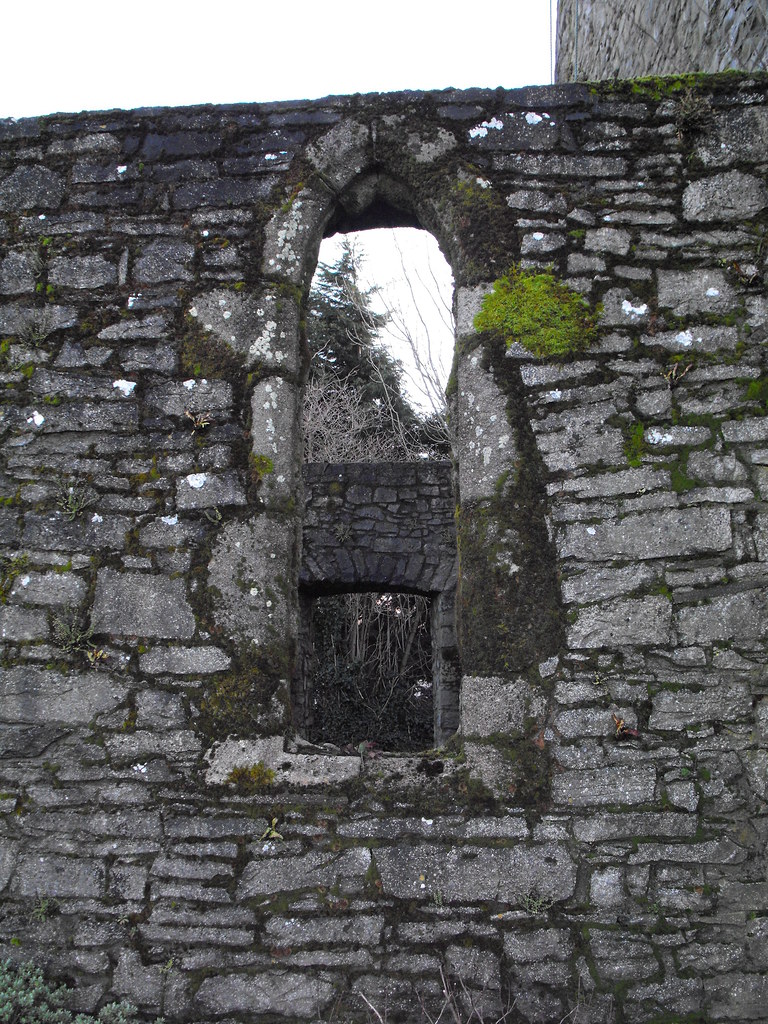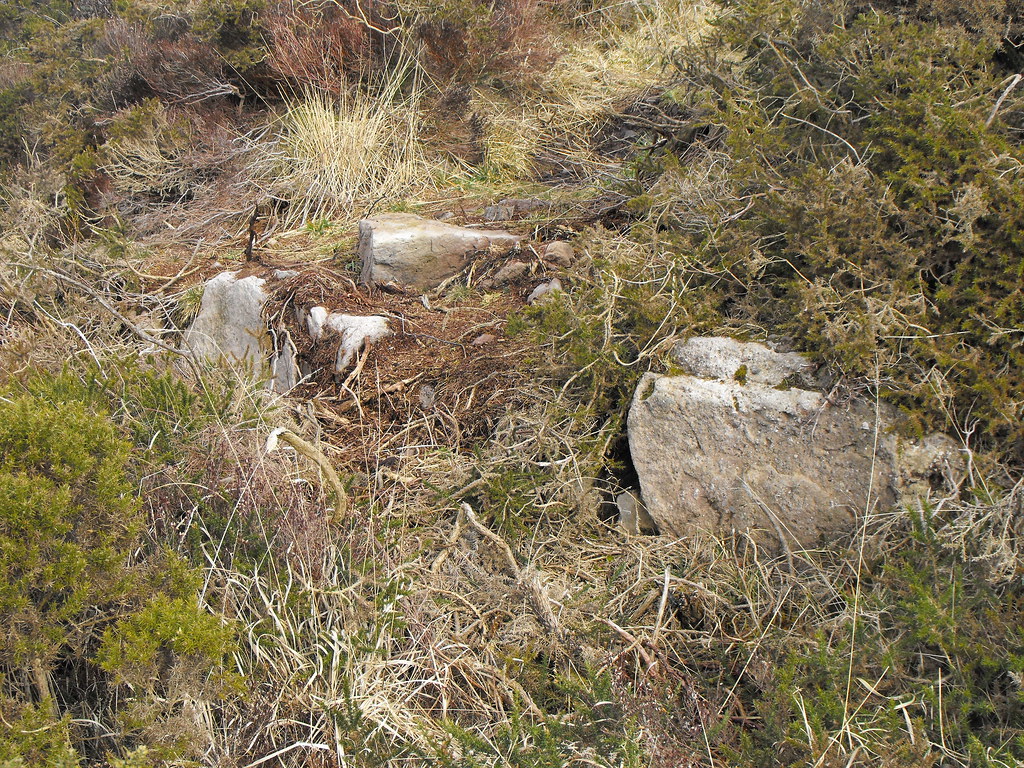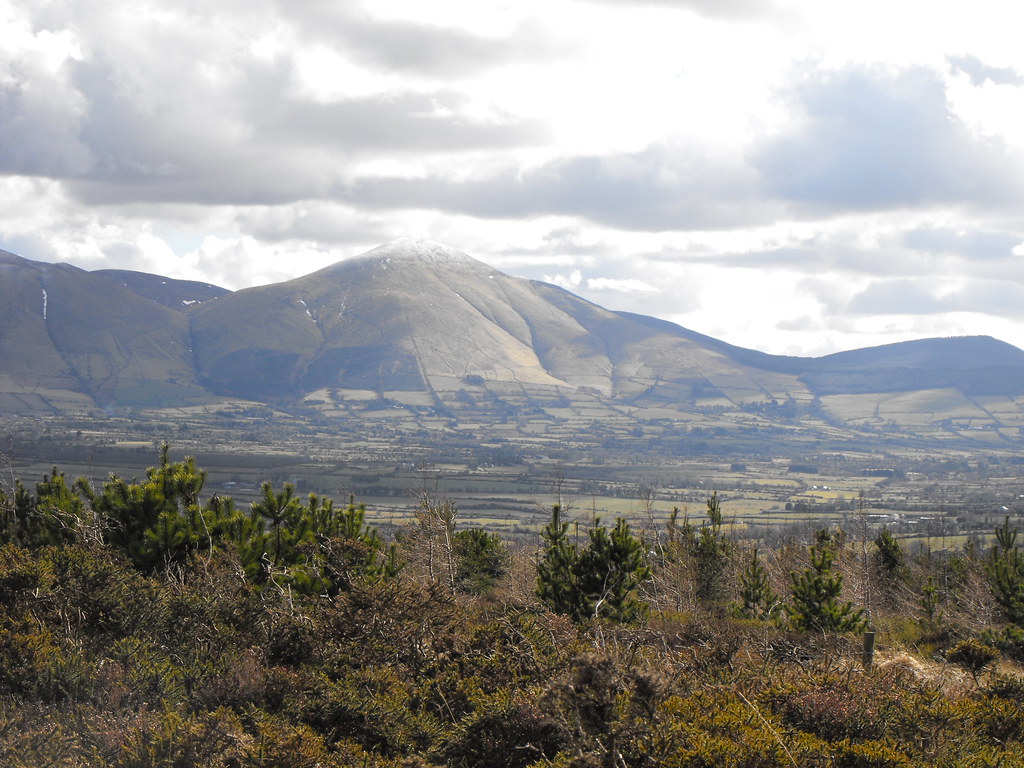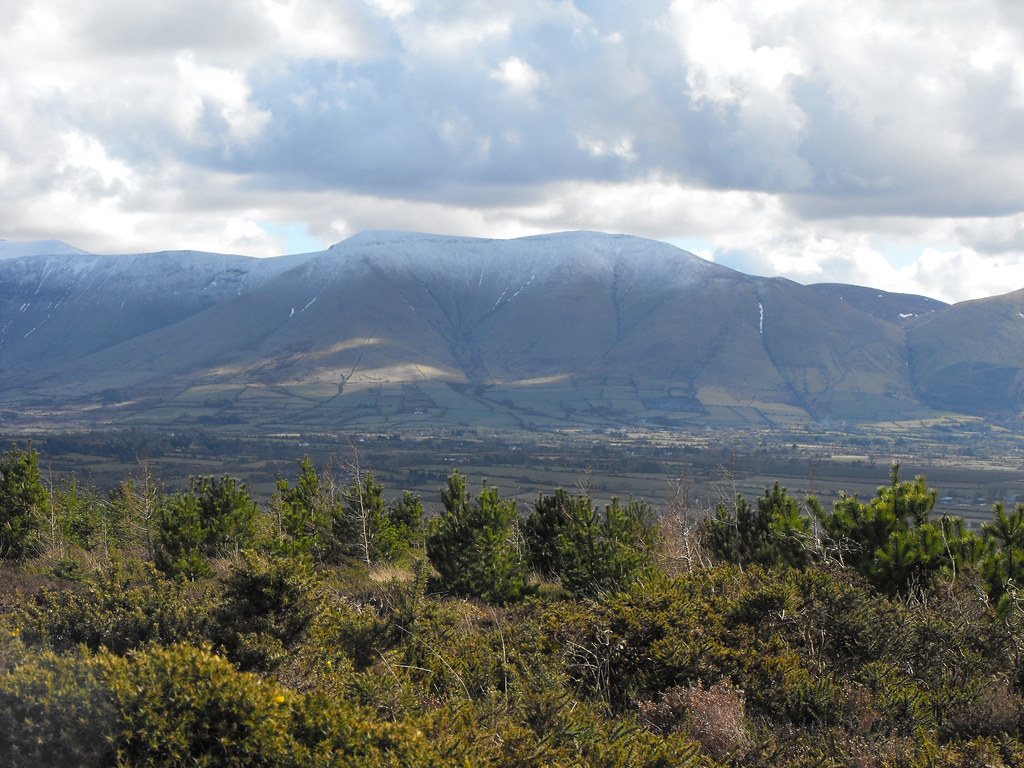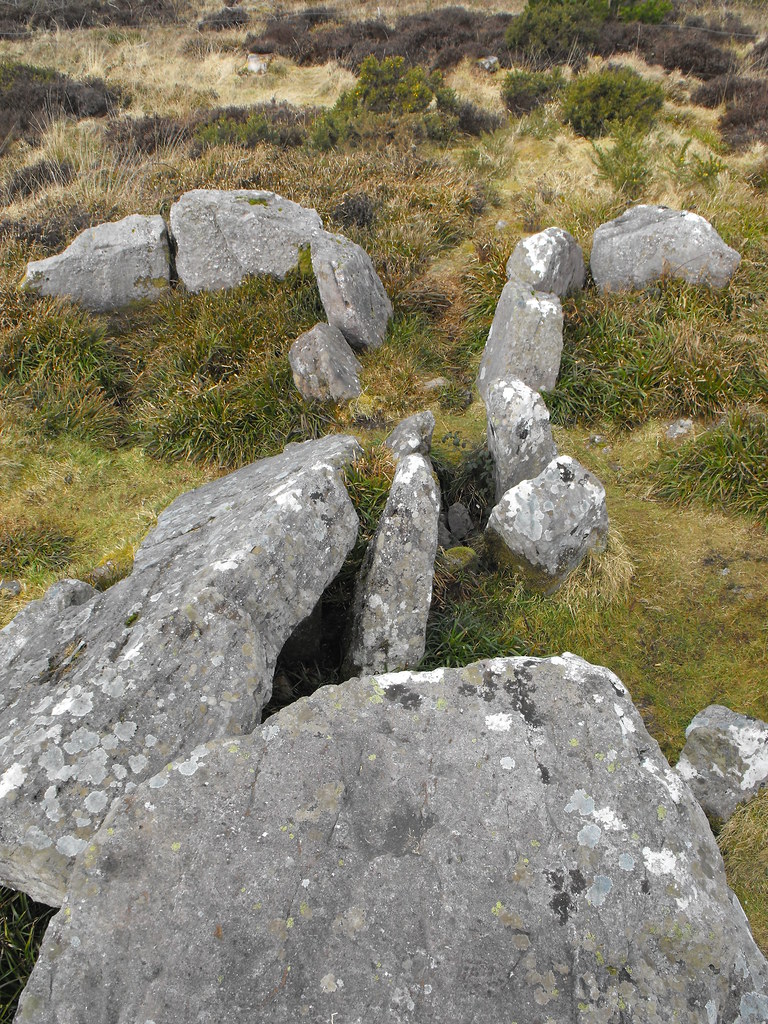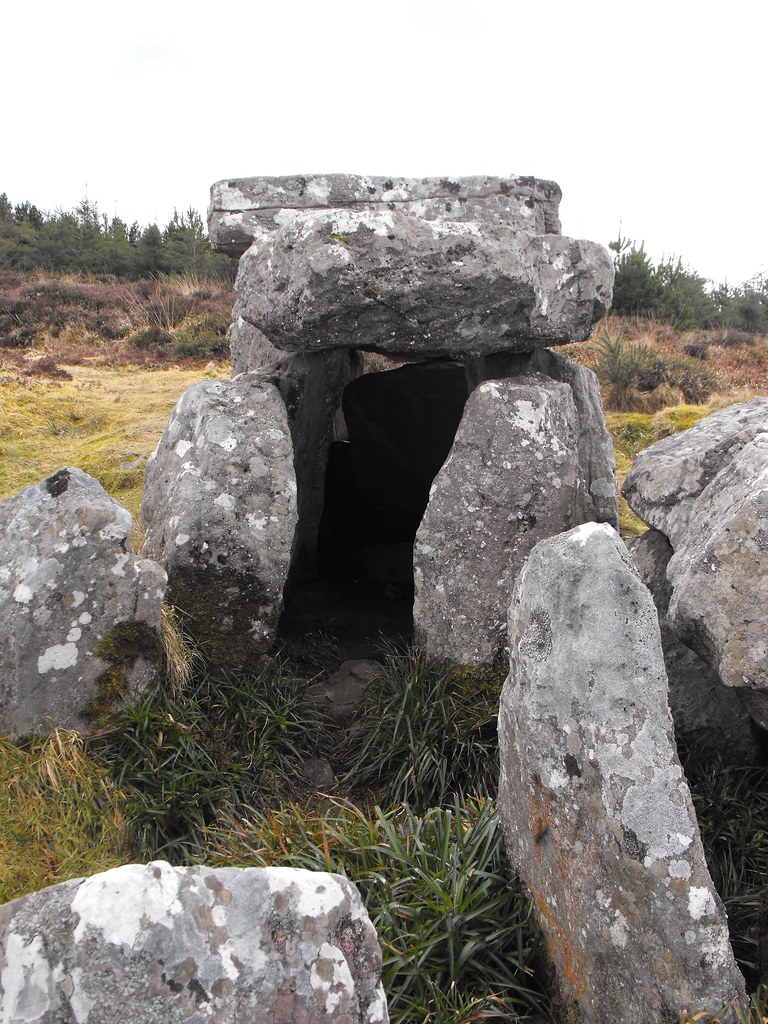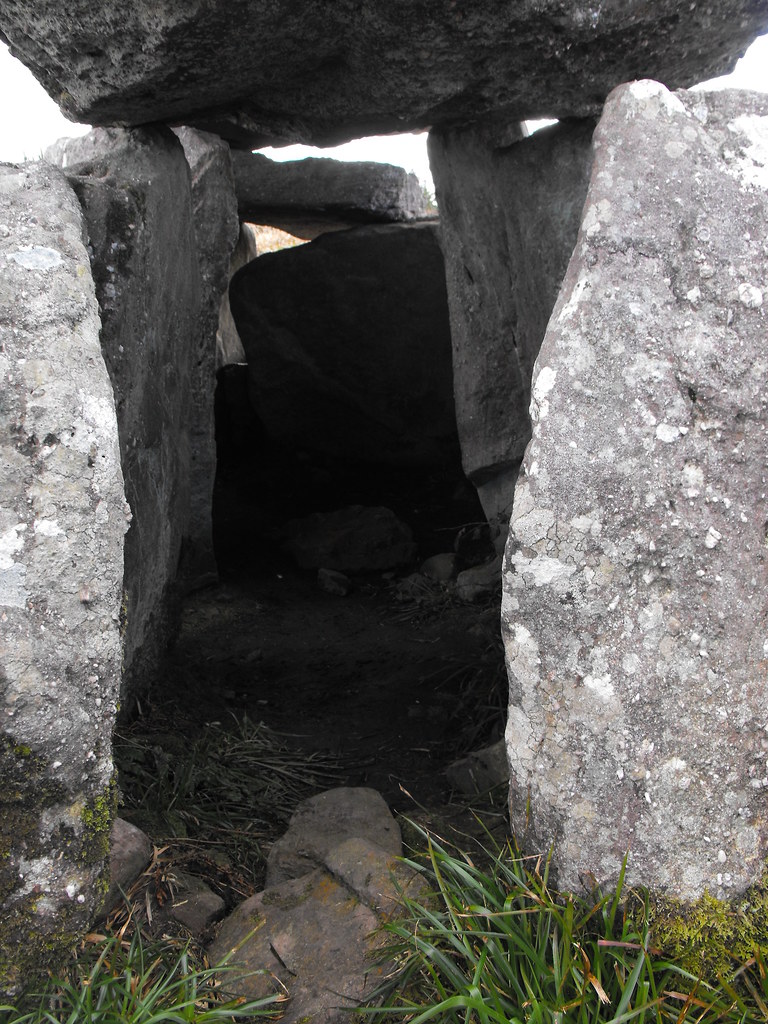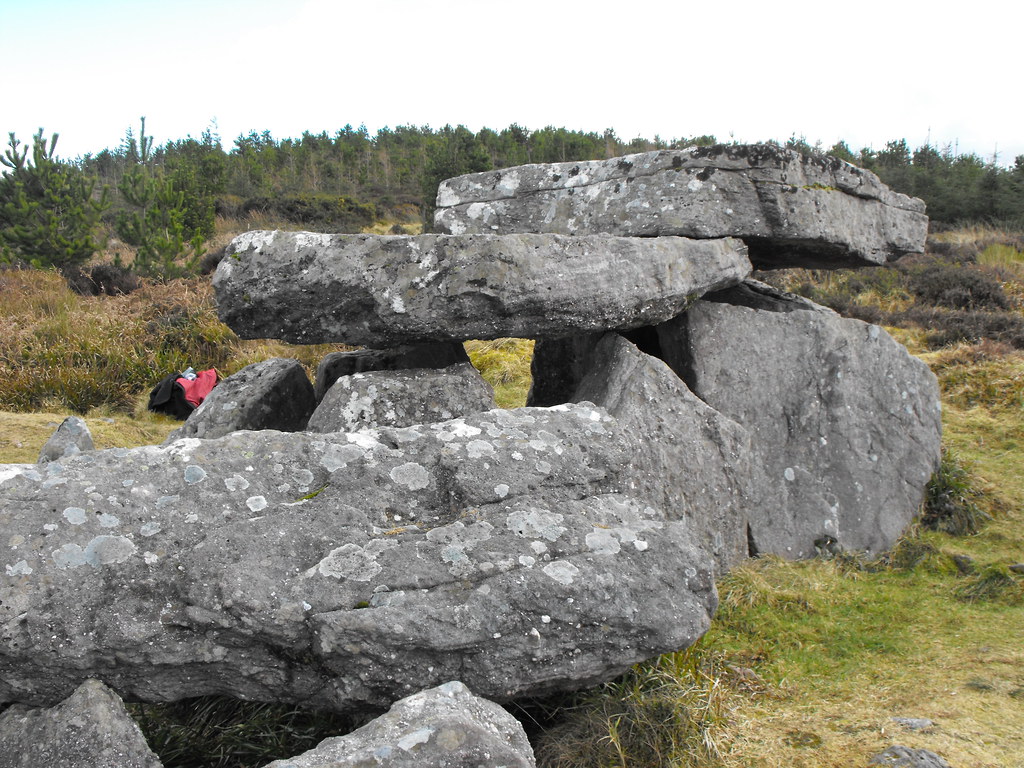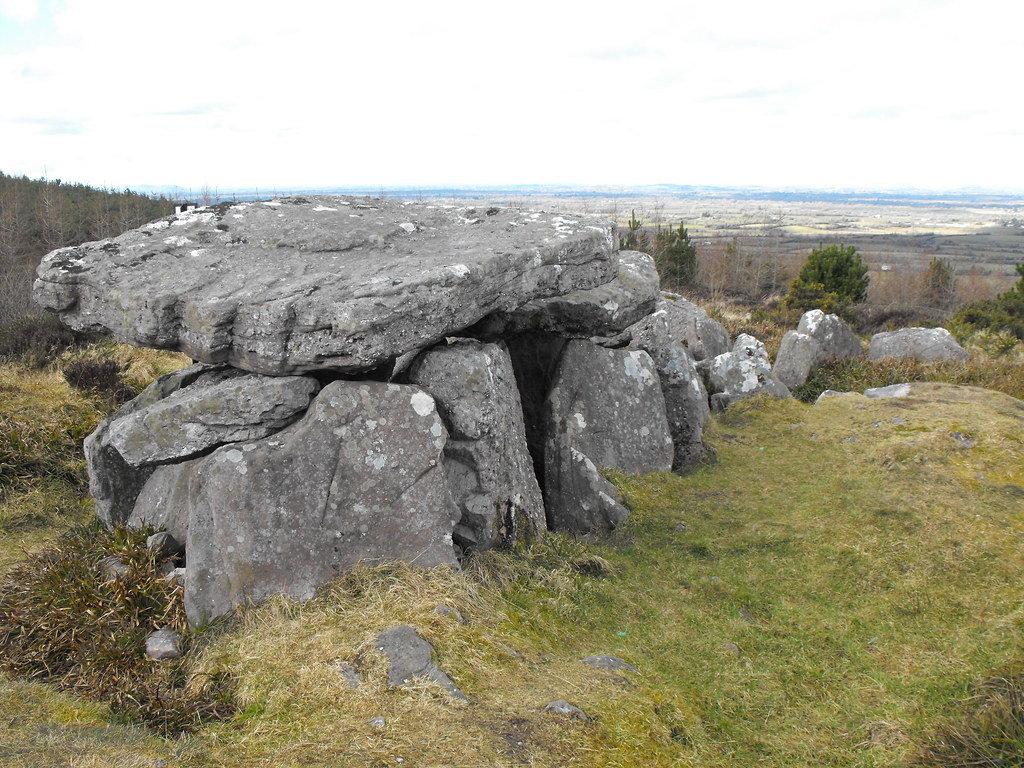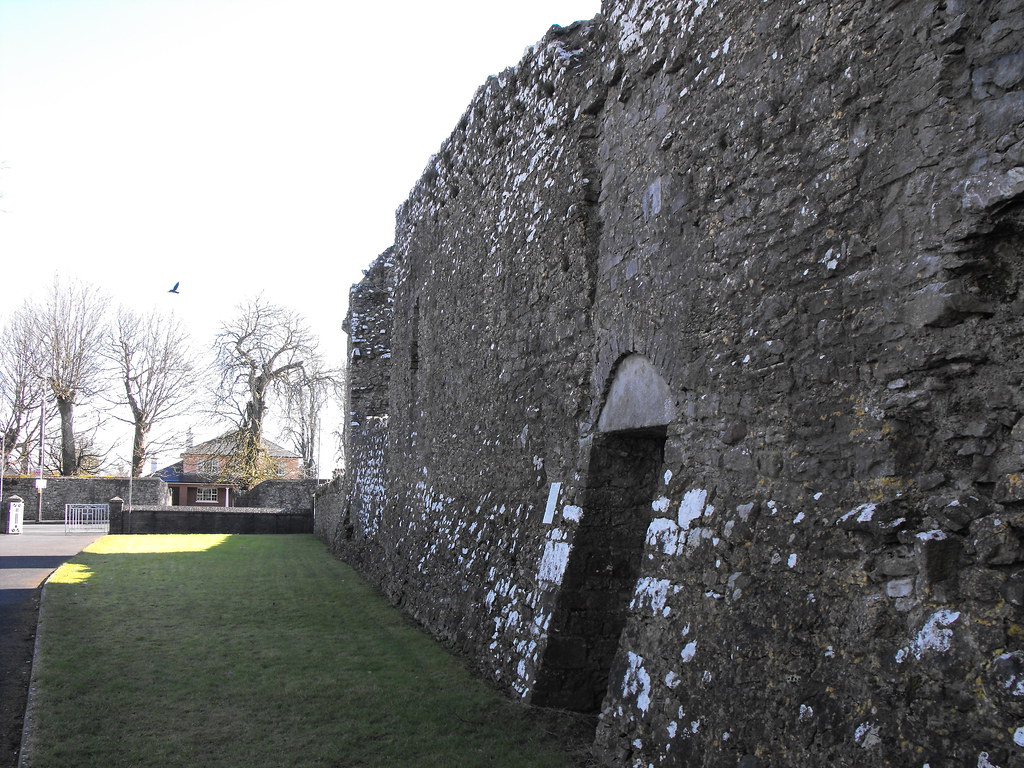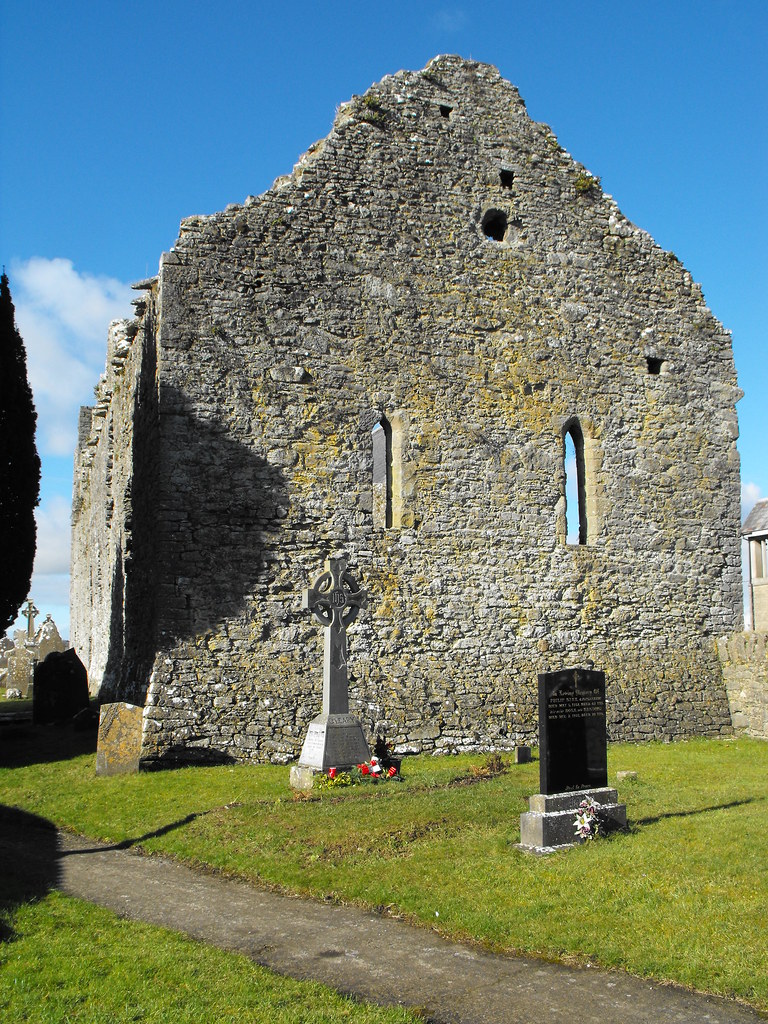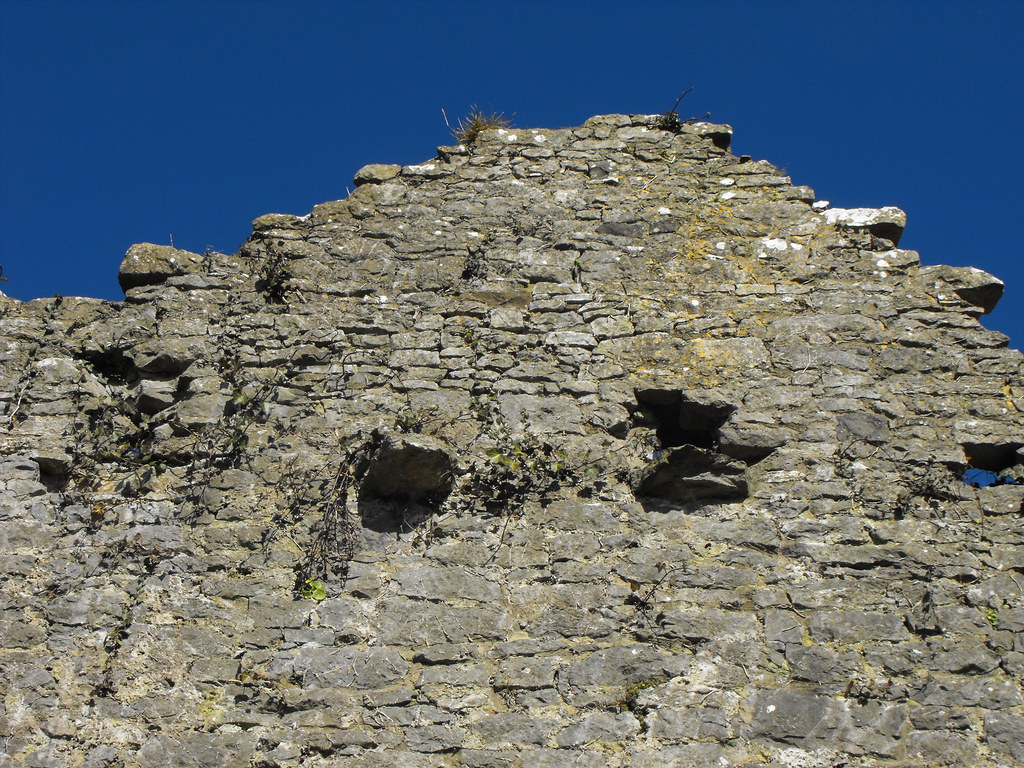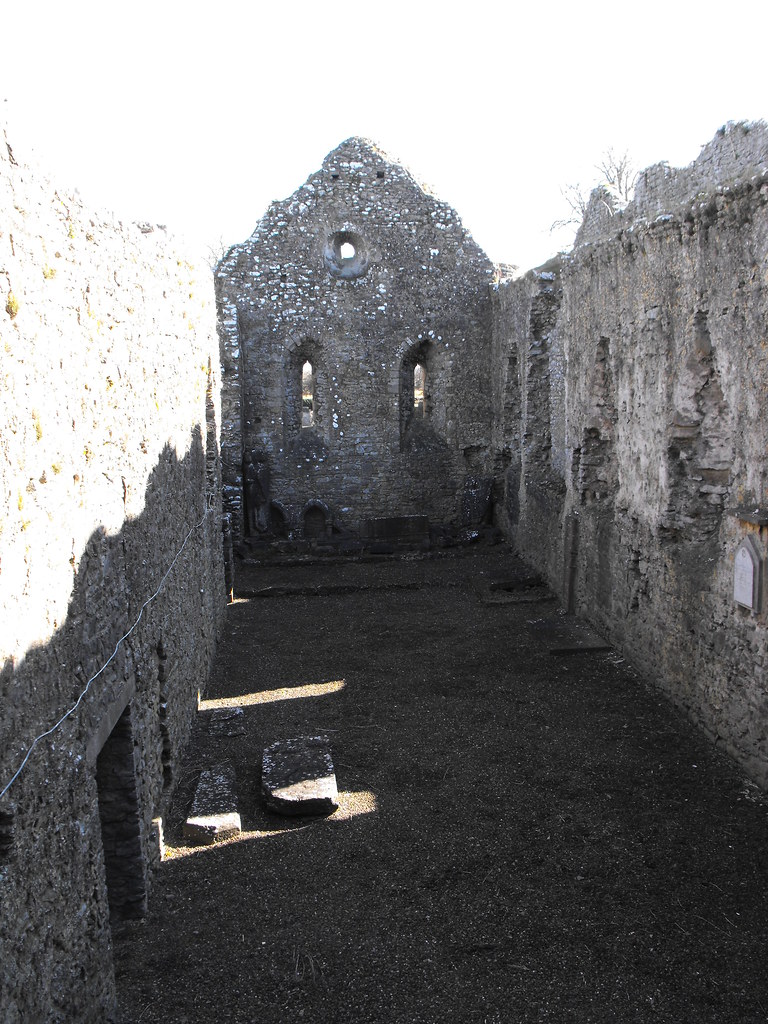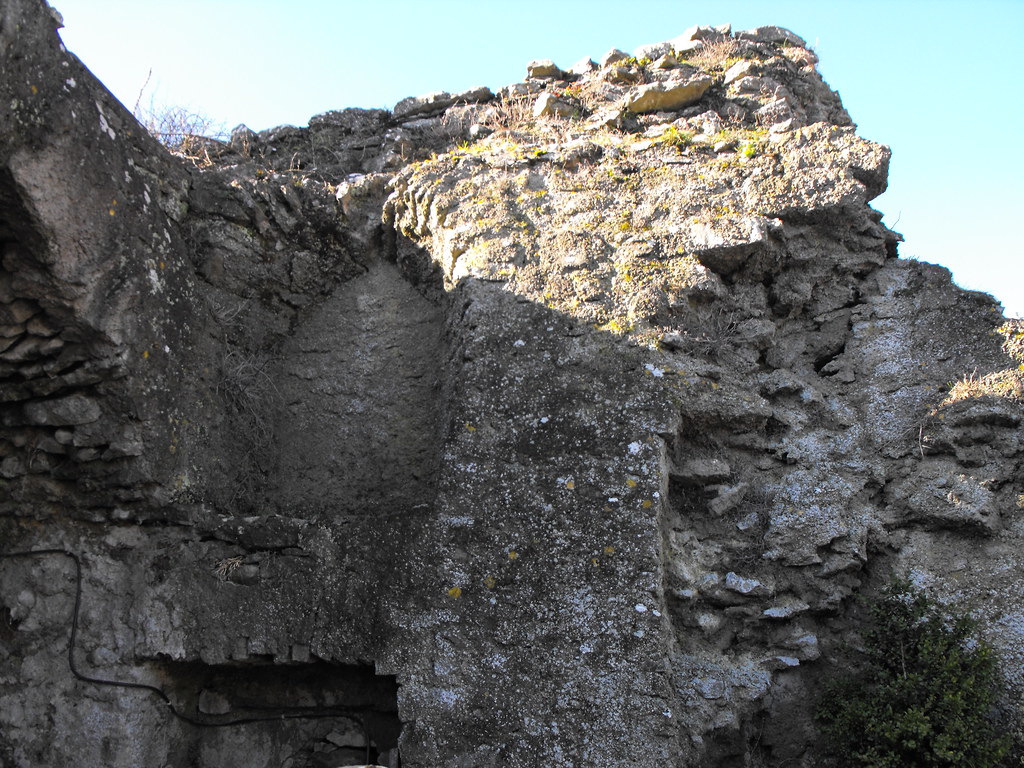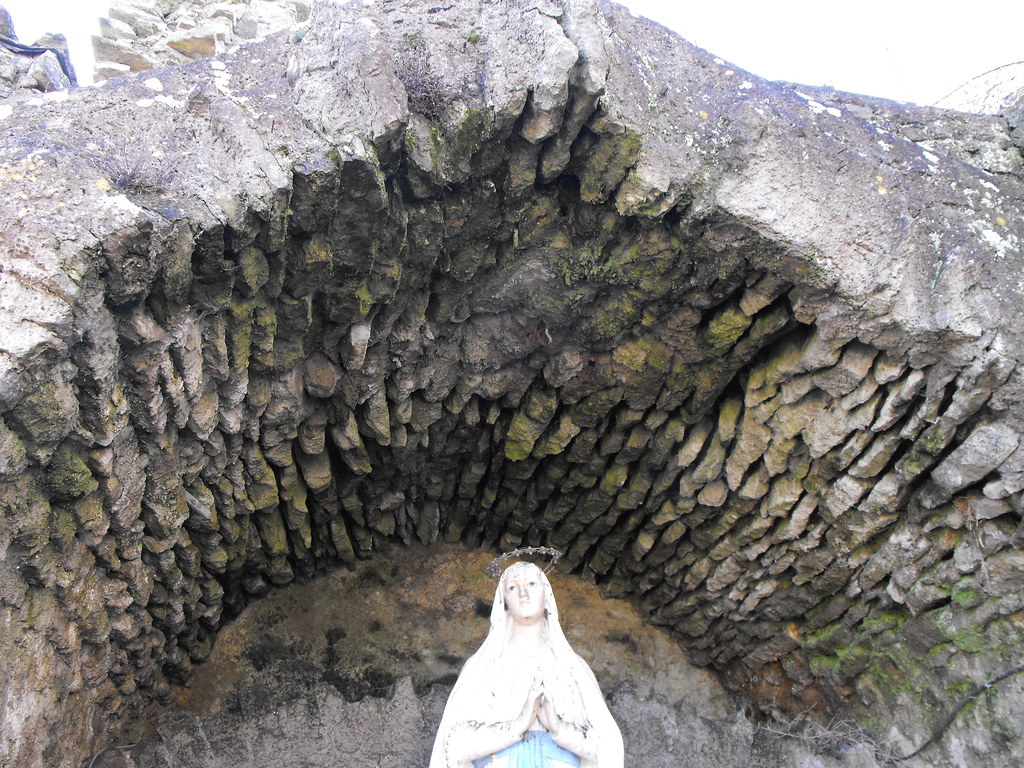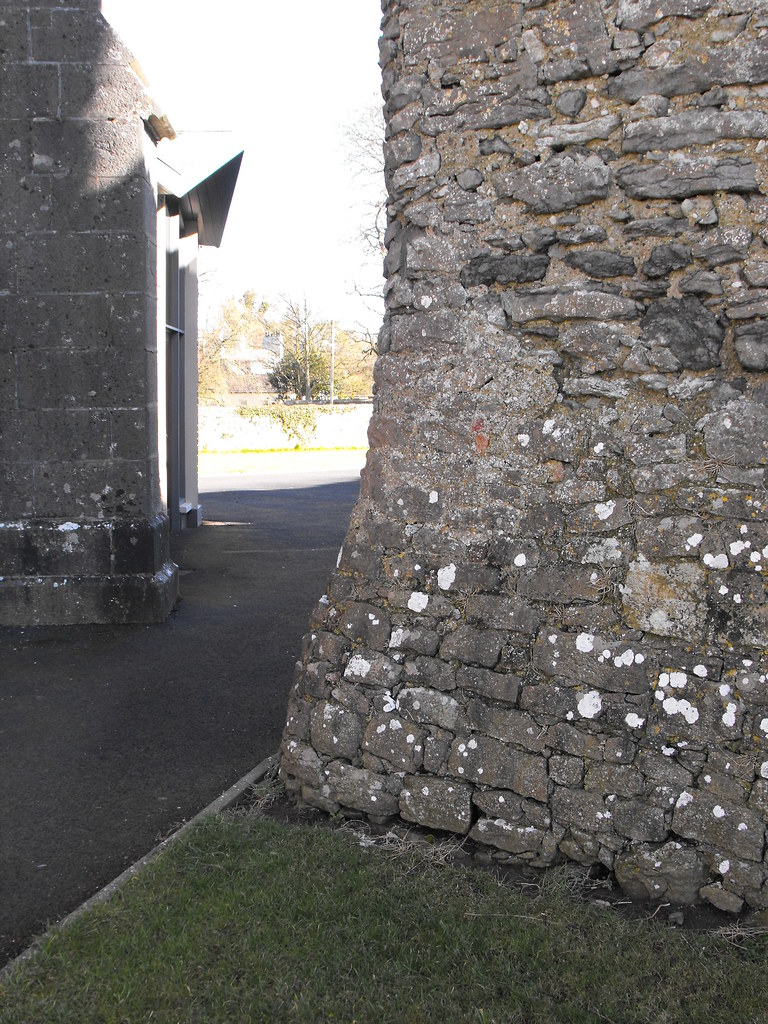Location – Located on the N9 near Bagenalstown. The entrance is through a small gate on the side of the road which can be a little hard to spot. You have to then walk down a track for about 100m. There is parking.
OS: S 682 608 (map 61)
Longitude: 6° 59' 23.51" W
Latitude: 52° 41' 40.06" N
GPS: S 68288 60840 (Accuracy: 3m)
See map at the bottom of the page.
Description and History – This is a nice little ruin that is well looked after. It is still a used graveyard and the church has been conserved somewhat. The present remains consist of a nave and chancel and all of the S and most of the E walls. The N wall has been rebuilt. The bellcote and piscina still survive. There are also small round headed windows in the ruin as well. The graveyard has some very ornate graves which are worth viewing and there is a small undecorated cross that maybe medieval in date but I cannot find any literature on it. Although this church is dated to the later medieval period it was mentioned in the Calendar of Ormond Deeds in 1262. Due to the proximity of the many early Christian foundations in the nearby area I suspect this may be the site of an early Christian foundation also, but this is really speculation.
Difficulty – Easy enough to get to, although the gate is a little tricky to spot. Be careful on this stretch of road as the cars race around here and it is always fairly busy.
For more ecclesiastical sites, click here.
For more sites in Co. Carlow, click here.
OS: S 682 608 (map 61)
Longitude: 6° 59' 23.51" W
Latitude: 52° 41' 40.06" N
GPS: S 68288 60840 (Accuracy: 3m)
See map at the bottom of the page.
Description and History – This is a nice little ruin that is well looked after. It is still a used graveyard and the church has been conserved somewhat. The present remains consist of a nave and chancel and all of the S and most of the E walls. The N wall has been rebuilt. The bellcote and piscina still survive. There are also small round headed windows in the ruin as well. The graveyard has some very ornate graves which are worth viewing and there is a small undecorated cross that maybe medieval in date but I cannot find any literature on it. Although this church is dated to the later medieval period it was mentioned in the Calendar of Ormond Deeds in 1262. Due to the proximity of the many early Christian foundations in the nearby area I suspect this may be the site of an early Christian foundation also, but this is really speculation.
Difficulty – Easy enough to get to, although the gate is a little tricky to spot. Be careful on this stretch of road as the cars race around here and it is always fairly busy.
For more ecclesiastical sites, click here.
For more sites in Co. Carlow, click here.
The bellcote is still used.
The piscina.
Possible medieval cross.
View The Standing Stone in a larger map



